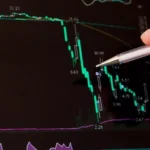
Amidst the effort to enhance the utility of the UPI-Lite wallet in areas where internet connectivity is scarce or nonexistent, the Reserve Bank of India has raised the upper limit for offline payment transactions from Rs 200 to Rs 500. Conversely, the overall threshold for offline transactions conducted through a financial instrument remains capped at Rs 2,000 consistently.
In accordance with the announcement detailed in the “Statement on Development and Regulatory Policies” issued on August 10, 2023, the maximum threshold for offline payment transactions has been elevated to Rs 500. The guidelines outlined in the framework persist in their relevance, as stated in a formal communication from the Reserve Bank of India.
According to a report featured in The Economic Times, this strategic alteration is positioned to expedite quicker, more dependable, and contactless transactions for everyday low-value purchases, encompassing aspects such as transit fares and similar domains, by eliminating the requirement for dual-factor verification for minor monetary dealings.
What precisely does UPI Lite entail? Fundamentally, UPI Lite constitutes an inherent feature embedded within the digital repository of one’s handheld device, facilitating immediate financial disbursements characterized by their modest amounts, and all of this is achieved without necessitating the conventional UPI Personal Identification Number (PIN).
The operational mechanism of UPI Lite: By its very nature, funds need to be transferred from an individual’s bank account to the treasury of the designated application. Subsequently, the allocated corpus becomes available for executing payments via UPI Lite, directly sourced from this reservoir.
“It is worth noting that both UPI Lite and the NCMC card effectively function as reservoirs in which financial resources can be preloaded. This endowed capital, residing within the confines of the Application or the Card, facilitates the execution of offline transactions—specifically, outflows or debits—without requiring an active internet connection. Conversely, inflows or credits undergo a virtual rendezvous, transpiring through the online domain. Given the multifaceted utilization of the NCMC card across realms such as Automated Teller Machines (ATMs), cybernetic disbursements, among others, it logically follows that the elevation of the transaction limit to Rs 500 will assuredly catalyze and augment the adoption of cashless transactions, supported by both UPI Lite and the NCMC card,” as articulated by Dr. Soumya Kanti Ghosh, the esteemed Group Chief Economic Advisor associated with the State Bank of India, during an exchange with The Economic Times.













